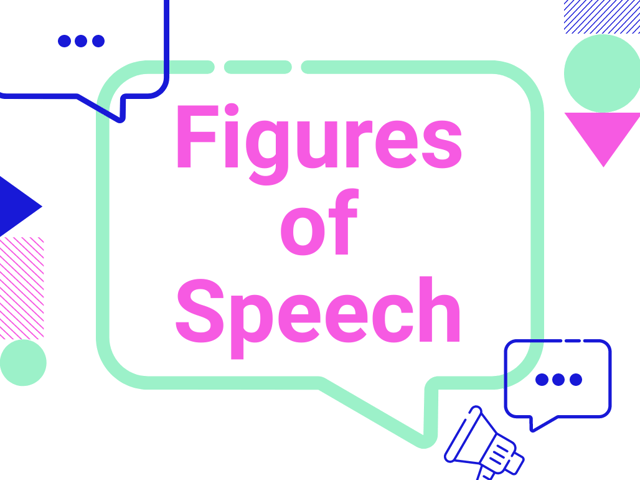
Figures of Speech
Figures of speech are metaphorical phrases used to suggest a deeper meaning of an idea or thought. Figures of speech are adopted by most native speakers without a second thought, as they are intrinsically tied to casual, native communication patterns. The term figure of speech can be used to describe a host of different phrases, but is perhaps best explained by identifying its opposite: a literal phrase or sentence. Figures of speech are not literal, but instead work to convey an idea or a thought without stating it outright.
The Many Types of Figures of Speech
Although figures of speech are more commonly used in casual conversations, it is important to understand the many figures of speech found in the English language. These phrases frequently permeate professional and even educational writing, as well, because figures of speech include similes, alliteration, personification, paradoxes, and metaphors, and often use irony in order to get the point across. Although they are common enough to be found in the vocabularies of most native speakers, they frequently employ more complex types of speech than might immediately be evident.
Here’s a list of ten of the most commonly used types of figures of speech with the function and an example of each.
| Type | How It Works | Example |
|---|---|---|
| alliteration | Alliteration is when the same letter or sound is used repeatedly in a sentence. |
“Sally sells seashells by the seashore.” |
| hyperbole | The word hyperbole is a synonym for exaggeration. |
“That mosquito was the size of a truck” |
| irony | Although there are many types of irony, irony in its broadest form is when a situation, phrase, or idea goes against what is expected. |
“In The Gift of the Magi, a husband gives his wife a set of combs for her hair by selling his watch, but she had already sold her hair to purchase her husband a chain for his watch.” |
| metaphor | A metaphor compares two seemingly unlike things without using like or as. |
“Her cheeks were roses, her smile a piercing set of thorns.” |
| oxymoron | An oxymoron pairs two opposing words. |
“Passive-aggressive”. “Freezer burn.” |
| onomatopoeia | Onomatopoeia describes words that sound similar to what they are describing. |
“Bang!” “Gulp.” |
| paradox | A paradox occurs when a sentence contains thoughts or ideas that seem to contradict each other. |
“You most effectively save money by spending it” |
| personification | Personification assigns human traits to non-human entities. |
“The car’s engine sighed as it drove, groaning under the strain of its task” |
| pun | A pun uses a word with multiple meanings for comic effect. |
“A man walked into a bar. Ouch.” |
| simile | A simile is a comparison using the words like or as. |
“You dance as gracefully as a swan; your feet feel light as a feather.” |
Common Figures of Speech
Perhaps one of the most easily recognized figures of speech is the phrase piece of cake. When someone declares, “That was a piece of cake!”, they are not literally suggesting that a situation or task is a piece of cake; instead, they are suggesting that a task or event is easy.
Similarly, when someone says “I have a ton on my mind,” they are not suggesting there is literally a one-ton weight pressing on their brain. Instead, they are suggesting that they are thinking about a lot of different things (or have a lot of things “running through”) their mind.
If you are alert for figures of speech as you read, you will discover many more of them in common use.
Recognizing Figures of Speech
Recognizing figures of speech is often as simple as asking the simple question: is this literal? Most non-literal speech falls under the umbrella of figure of speech, regardless of the exact name for the figure in question. Although simile and metaphor are frequently recognized as items used in poetry and prose, they are only a couple of examples in the broader category of figures of speech.

Keep Reading

ACT Blog
Essay Writing Practice and Prompts for the ACT
The ACT writing test is an optional exam, and is not always given as pa…

ACT Blog
How to Do Well on the ACT Essay
Understanding the ACT Essay Before diving into strategies to excel, it…

ACT Blog
How to Study for the ACT in One Week
Getting ready for American College Testing (the ACT) can be a source of…